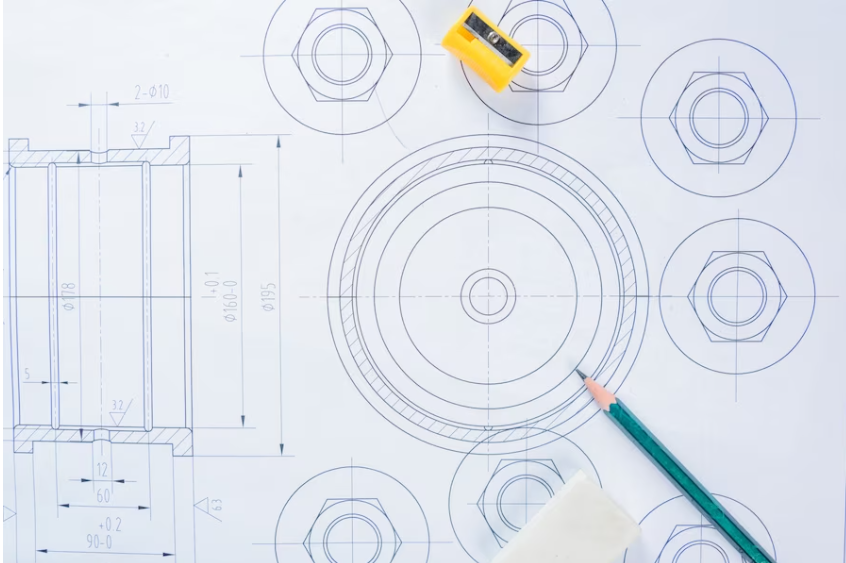Are you ready to unlock the secrets of mechanical design? Brace yourself for a captivating journey into the world where creativity and problem-solving merge perfectly. In this blog post, we will dive deep into the magic behind mechanical design and explore how it can turn even the most complex challenges into opportunities for awe-inspiring solutions. Whether you’re an aspiring engineer or simply someone who appreciates innovative thinking, join us on this enchanting adventure as we uncover the key principles that make mechanical design truly magical. Get ready to be inspired!
Introduction to Mechanical Design
In mechanical design, engineers use their creativity and technical knowledge to come up with solutions to problems. They apply the principles of physics and mathematics to create designs for machines, tools, and other objects.
Mechanical design is a process that starts with an idea or a problem. The engineer then develops a concept for a solution and creates a prototype. After testing and refinements, the final product is ready for production.
The best mechanical designs are those that are both functional and aesthetically pleasing. A well-designed machine should be able to do its job efficiently and effectively while also looking good.
Many types of mechanical designs exist, from simple household items to complex aerospace components. Whatever the project, the goal is always the same: to create a product that meets the customer’s or client’s needs.
Benefits of Creative Problem Solving
Creative problem-solving has many benefits, including the ability to think outside the box, come up with new ideas, and find new ways to approach old problems. This thinking can help you become more successful in your personal and professional life.
Some of the benefits of creative problem-solving include the following:
- Increased Success: Creative problem-solving can help you succeed in both your personal and professional life.
- Improved Thinking Skills: This thinking can help improve your critical thinking and problem-solving skills.
- New Ideas: Creative problem-solving allows you to develop new ideas and solutions to old problems.
- Improved Communication Skills: This type of thinking can also help improve your communication skills, as you can better explain your ideas to others.
- Increased Confidence: With improved success comes increased confidence. Solving problems creatively will make you feel more confident in your abilities.
Tools and Techniques for Creative Problem Solving
There are a variety of tools and techniques that can be used for creative problem-solving. These include brainstorming, mind mapping, and lateral thinking techniques.
Brainstorming is a popular tool for generating new ideas. It involves a group of people coming together to quickly render as many ideas as possible. Mind mapping is another useful tool for creative problem-solving. This technique consists of creating a visual map of ideas, which can help to stimulate new thoughts and connections. Lateral thinking techniques are also useful for creative problem-solving. These include thinking outside the box and looking at problems from different angles.
Examples of Mechanical Designs with Creative Solutions
Some of the most creative mechanical designs are those that solve problems in innovative ways. Here are a few examples of mechanical designs with creative solutions:
-A handrail that is also a work of art: This handrail was designed to be functional and visually appealing. The designer used unique materials and an interesting colour scheme to create a practical and beautiful handrail.
-An inventive way to keep your shoes organized: This shoe rack was designed with both form and function in mind. The clever design allows you to store your shoes in an organized way while keeping them within easy reach.
-A coffee table that doubles as a storage unit: This coffee table was designed with two storage levels to keep books, magazines, or other items neatly out of sight but within reach.
-A lamp doubling as a bookend: This lamp was designed to be functional and stylish. The bookend feature ensures that your books will stay neatly in place while the light provides a warm and inviting ambiance to any room.
Tips and Tricks for Creative Problem Solving
Regarding creative problem-solving, some tips and tricks can help you get the most out of your mechanical design process. Here are a few of our favourites:
- Brainstorm with a team: When you’re stuck on a problem, it can be helpful to brainstorm with a team. This way, you can develop potential solutions and narrow down the best option.
- Take your time: Don’t rush your creative process. If you allow yourself enough time to explore different options, you’re more likely to develop an innovative solution.
- Be open to new ideas: It’s important to keep an open mind during the mechanical design process. You never know when a great idea will strike, so be prepared to consider all possibilities.
- Challenge assumptions: As you work through the design process, challenge any assumptions that you may have about the problem or the potential solutions. By doing this, you could uncover some hidden constraints that could lead to even better solutions.
- Prototype early and often: Prototyping is crucial to mechanical design. It allows you to test different solutions and see how they work in the real world. The more prototypes you create, the closer you’ll get to finding the perfect solution for your problem.
Conclusion
Mechanical design is an incredibly powerful tool that can be used to create innovative solutions to complex problems. By understanding the principles and techniques of mechanical engineering design, you can unleash your creativity and come up with ideas that nobody has thought of before. With a little practice, the magic of mechanical design will soon become second nature to you, helping you tackle any challenge or problem that comes your way.





